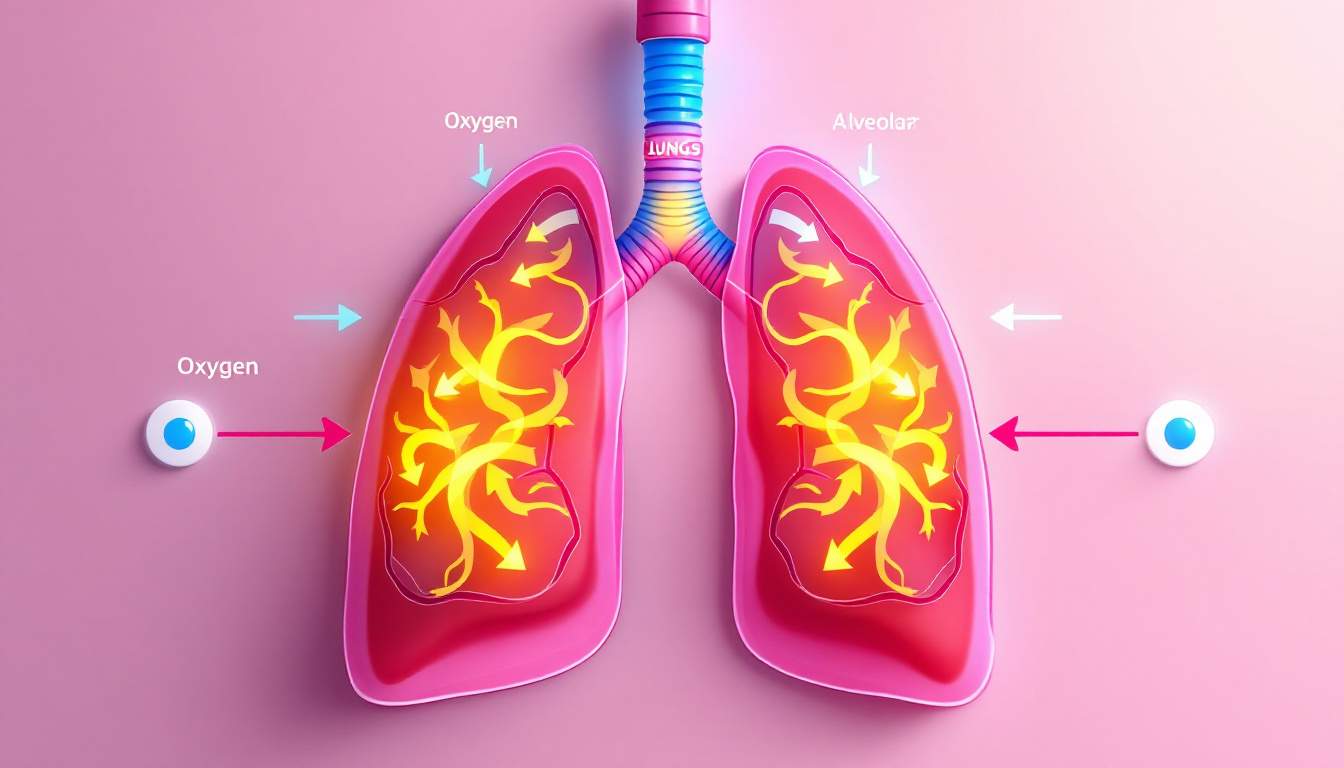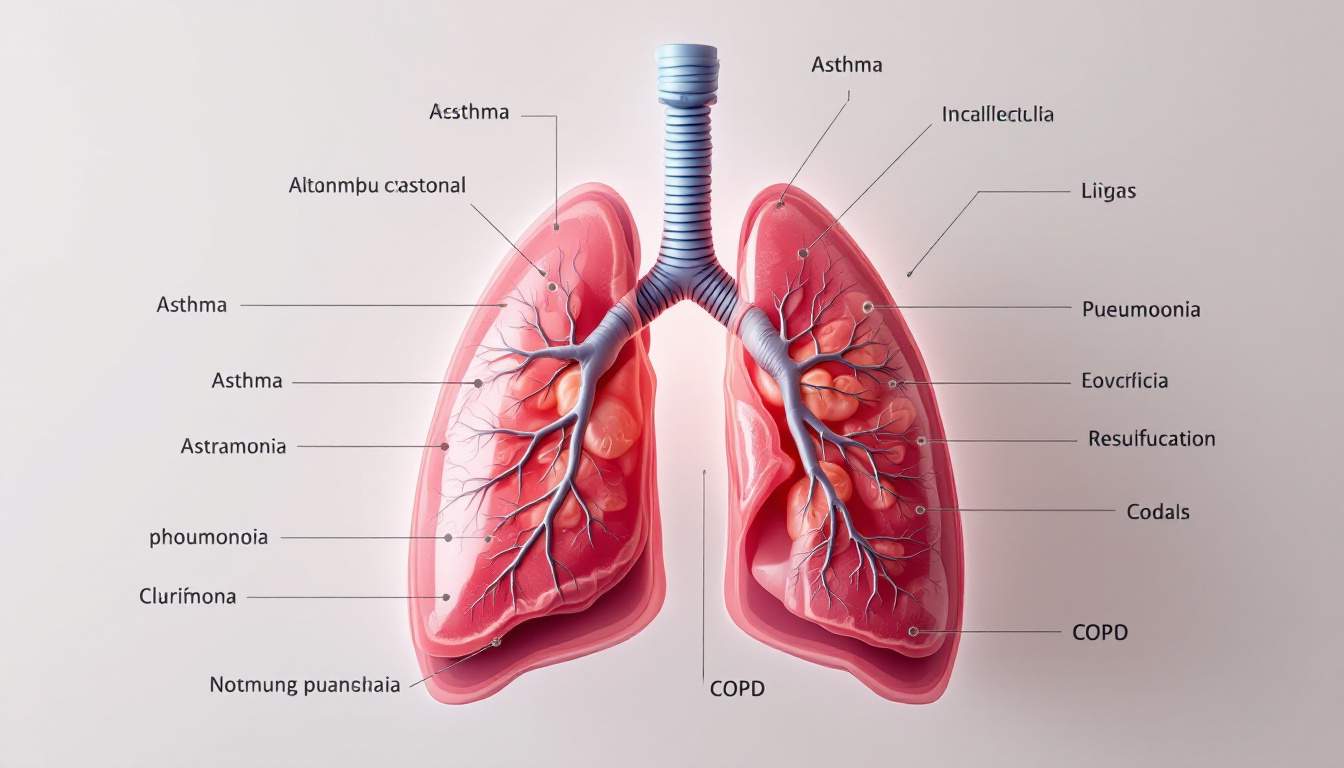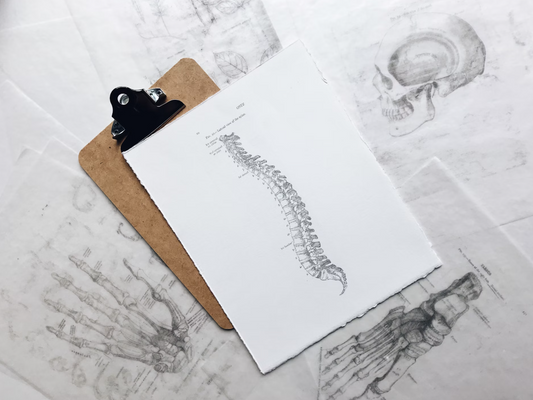Glossary: What are Lungs
The lungs are vital organs in the human body, playing a crucial role in the respiratory system. They are responsible for the exchange of gases, allowing oxygen to enter the bloodstream while expelling carbon dioxide. This article aims to provide a comprehensive understanding of lungs, their functions, anatomical structure, biological processes, common diseases, and tips for maintaining lung health.
Understanding the Basics of Lungs
To appreciate the significance of lungs, it's essential to begin with their basic understanding. Lungs are two spongy organs located in the chest, protected by the rib cage. They are part of the respiratory system, which is primarily responsible for taking in oxygen and expelling carbon dioxide from the body.
Definition and Function of Lungs
The primary function of the lungs is to facilitate the exchange of gases during breathing. When you breathe in, the lungs expand, drawing air into small sacs called alveoli. Here, oxygen is transferred to the bloodstream, while carbon dioxide, a waste product of cellular metabolism, is removed and expelled from the lungs when you exhale.
The Anatomy of Lungs
The lungs are divided into two main sections: the right lung and the left lung. The right lung is slightly larger and consists of three lobes, while the left lung has two lobes to make room for the heart, which is positioned slightly to the left side of the chest.
Structurally, each lung is surrounded by a pleural membrane that provides a protective layer. The internal structure includes bronchi, which branch into smaller bronchioles that lead to the alveoli, the tiny air sacs where gas exchange occurs. Each alveolus is surrounded by capillaries to facilitate oxygen absorption and carbon dioxide removal.
The Role of Lungs in the Respiratory System
The lungs play an integral role in the respiratory system, which also includes the nose, throat, and diaphragm. When you inhale, air travels through the nasal passages, where it is filtered, warmed, and moistened before reaching the lungs. The diaphragm, a muscle located beneath the lungs, contracts and flattens to create a vacuum that pulls air into the lungs.
During exhalation, the diaphragm relaxes, pushing air out of the lungs. This cycle of inhalation and exhalation is essential for maintaining an adequate supply of oxygen for cellular functions and removing harmful carbon dioxide. Additionally, the lungs also play a role in regulating blood pH levels by controlling the amount of carbon dioxide that is expelled, which is crucial for maintaining the body’s acid-base balance.
Moreover, the lungs are not just passive organs; they actively participate in various reflexes and responses. For instance, they help in filtering out harmful particles and pathogens that enter the respiratory tract, thanks to the presence of mucus and cilia lining the airways. This defense mechanism is vital for preventing infections and maintaining overall respiratory health. Furthermore, the lungs are involved in vocalization, as the airflow from the lungs is essential for producing sound, allowing for speech and communication, which are fundamental aspects of human interaction.
The Biological Processes in Lungs
Understanding the biological processes in the lungs sheds light on how these remarkable organs operate daily. From gas exchange to the regulation of blood pH, the lungs perform several essential functions.

Oxygen and Carbon Dioxide Exchange
The primary biological process in the lungs is the exchange of oxygen and carbon dioxide. When air enters the alveoli, oxygen molecules diffuse through the alveolar walls into the capillaries. At the same time, carbon dioxide diffuses from the blood into the alveoli, where it is then expelled from the body.
This efficient system ensures that the body receives the oxygen it needs to survive while getting rid of carbon dioxide, a toxic byproduct of metabolism. The alveoli, tiny air sacs in the lungs, are uniquely structured to maximize this exchange. With a surface area roughly equivalent to that of a tennis court, they provide an extensive interface for gas exchange, allowing for the rapid transfer of gases due to their thin walls and rich blood supply.
The Process of Breathing
Breathing is a continuous process that involves both voluntary and involuntary actions. While you can consciously control your breath (for example, when taking a deep breath), the autonomic nervous system also regulates breathing automatically, ensuring that oxygen supply meets the body's demands at all times.
Breathing rates can increase during physical activity, stress, or excitement, while they may slow down during rest or sleep. This adaptability is crucial for maintaining homeostasis in the body. Additionally, the mechanics of breathing involve the diaphragm and intercostal muscles, which work together to expand and contract the thoracic cavity. This action creates a pressure difference that draws air in and pushes it out, demonstrating the intricate coordination of muscular and neural systems involved in respiration.
Regulation of Blood pH
The lungs also play a vital role in maintaining the body's acid-base balance, or blood pH. When carbon dioxide levels rise in the blood, it can lead to an increase in acidity. The respiratory system responds by increasing the breathing rate, expelling more carbon dioxide and thus reducing acidity.
Conversely, if blood pH becomes too alkaline, breathing can slow down, allowing CO2 levels to rise again. This precise regulation helps ensure that the body functions optimally. The interplay between the lungs and the kidneys is also significant in this context, as both organs work together to maintain pH balance. While the lungs adjust the levels of carbon dioxide through respiration, the kidneys manage bicarbonate and hydrogen ion concentrations, highlighting a complex feedback system that underscores the importance of respiratory health in overall metabolic function.
Common Diseases and Conditions of the Lungs
Despite their resilience, lungs can be affected by various diseases and conditions. Understanding these ailments can help in prevention and treatment.

Asthma and its Impact on Lungs
A common chronic condition, asthma is characterized by inflammation and narrowing of the airways, making breathing difficult. Asthma triggers can include allergens, pollution, cold air, and exercise. Symptoms may include wheezing, shortness of breath, chest tightness, and coughing.
Effective management of asthma often involves medication and avoiding known triggers, enabling individuals to lead active, healthy lives despite the condition. Additionally, many patients benefit from developing an asthma action plan in collaboration with their healthcare provider, which outlines steps to take during an asthma attack and helps monitor symptoms over time. Education about proper inhaler techniques and the importance of regular check-ups can also empower patients to take control of their condition.
Chronic Obstructive Pulmonary Disease (COPD)
COPD is a progressive inflammatory lung disease that obstructs airflow, primarily caused by long-term exposure to irritating gases or particulate matter, most commonly from smoking. People with COPD experience symptoms such as chronic cough, excessive mucus production, and shortness of breath.
While there is currently no cure for COPD, early diagnosis and a tailored treatment plan can significantly improve the quality of life for those affected. Pulmonary rehabilitation programs, which include exercise training, nutritional counseling, and education, can help patients manage their symptoms more effectively. Furthermore, quitting smoking is the most crucial step a person with COPD can take to slow the progression of the disease and enhance their overall lung function.
Lung Cancer: An Overview
Lung cancer remains one of the leading causes of cancer-related deaths worldwide. It often develops due to prolonged exposure to carcinogens such as tobacco smoke, radon gas, and asbestos. Diagnosis typically occurs at an advanced stage, which complicates treatment options.
Early detection is key in improving survival rates, making awareness of risk factors and symptoms essential. Common symptoms may include a persistent cough, chest pain, and unexplained weight loss. In addition, advancements in imaging technology and biomarkers are paving the way for more precise diagnostic methods and targeted therapies. Patients diagnosed with lung cancer may also explore clinical trials that offer access to cutting-edge treatments, including immunotherapy and personalized medicine, which can provide new hope in the fight against this formidable disease.
Maintaining Lung Health
Just as the lungs can be affected by disease, maintaining their health is crucial for overall well-being.
Importance of Regular Exercise for Lung Health
Engaging in regular physical activity is one of the most effective ways to promote lung health. Exercise strengthens the respiratory muscles, improves lung capacity, and promotes better oxygenation of the body. Activities like walking, jogging, swimming, and cycling are excellent options for enhancing lung function.
Moreover, aerobic exercises improve cardiovascular health, ensuring that oxygen-rich blood circulates efficiently throughout the body. Incorporating breathing exercises, such as diaphragmatic breathing or pursed-lip breathing, can further enhance lung capacity and efficiency. These techniques not only help in maximizing oxygen intake but also assist in reducing stress and promoting relaxation, which is beneficial for overall respiratory health.
The Impact of Smoking on Lung Health
Smoking is the most significant risk factor for lung diseases, including COPD and lung cancer. The harmful substances in tobacco smoke damage lung tissue, leading to inflammation, reduced lung function, and increased risk of infections.
Quitting smoking has immediate benefits, such as improved lung function and decreased risk of diseases. Resources and support programs are available for those seeking to quit, making it easier to embark on this life-changing journey. Additionally, engaging in support groups or counseling can provide the motivation and accountability needed to overcome cravings and maintain a smoke-free lifestyle. The journey to quitting smoking is often challenging, but the long-term rewards—such as better lung health and increased quality of life—are well worth the effort.
Nutrition and Lung Health
Nutrition plays a vital role in maintaining lung health. A balanced diet rich in antioxidants, vitamins, and minerals can support lung function and overall wellness. Foods high in vitamin C, such as oranges and kale, and omega-3 fatty acids, found in fatty fish, help combat inflammation and improve lung health.
Additionally, staying hydrated ensures that the mucous membranes lining the lungs remain moist and function optimally, further aiding the respiratory system. Including foods rich in magnesium, such as nuts and whole grains, can also be beneficial, as magnesium has been shown to help relax the bronchial muscles and improve airflow. Furthermore, avoiding processed foods high in trans fats and sugars can help reduce inflammation and support overall lung function, making dietary choices a critical aspect of lung health maintenance.
Medical Procedures and Treatments for Lung Conditions
When lung conditions arise, various medical procedures and treatments are available to help manage symptoms and improve lung function.
Lung Transplants: When and Why They are Needed
Lung transplants are considered when other treatments have failed for severe lung diseases, such as end-stage COPD, pulmonary fibrosis, or cystic fibrosis. During this procedure, a diseased lung is replaced with a healthy lung from a donor, offering a new lease on life for many patients.
While lung transplants can greatly improve quality of life, candidates must undergo extensive evaluations before being placed on the transplant list. This evaluation includes a thorough assessment of the patient's overall health, psychological readiness, and the presence of any other medical conditions that could complicate the surgery or recovery process. The waiting list for a lung transplant can be long, and during this time, patients are often placed on supplemental oxygen or other therapies to manage their symptoms as effectively as possible.
The Role of Pulmonary Rehabilitation
Pulmonary rehabilitation is a comprehensive program that combines education, exercise training, nutrition counseling, and psychological support for individuals with chronic lung diseases. It aims to enhance lung function, increase exercise tolerance, and improve overall quality of life.
Participants in pulmonary rehabilitation often report better control of symptoms and an enhanced ability to perform daily activities, leading to greater independence. The program is typically tailored to meet the specific needs of each individual, incorporating both aerobic and strength-training exercises that are designed to build endurance and improve respiratory muscle function. Additionally, education sessions help patients understand their condition, enabling them to make informed decisions about their health and engage in self-management strategies that can lead to long-term benefits.
Medications Used for Treating Lung Diseases
A variety of medications are available for treating lung diseases, ranging from bronchodilators, which relax airway muscles, to corticosteroids that reduce inflammation. These medications can significantly improve breathing and quality of life for individuals with chronic lung conditions.
Strategies for effective management often involve a combination of medications tailored to the individual's specific needs and conditions. Regular consultations with healthcare providers ensure that the treatment plan remains effective and responsive to changes in health status. In addition to traditional medications, newer therapies such as biologics are emerging, which target specific pathways involved in lung inflammation and can provide relief for patients with conditions like asthma or severe allergic reactions. Furthermore, adherence to prescribed medication regimens is crucial, as inconsistencies can lead to exacerbations and a decline in lung function, underscoring the importance of patient education and support in managing these chronic conditions.
In conclusion, understanding the lungs—their structure, functions, processes, diseases, and maintenance—is essential for promoting overall health and well-being. By adopting healthy habits and seeking appropriate medical treatment, individuals can optimize their lung health and lead fuller, more active lives.
As you seek to enhance your lung health and embrace a more active lifestyle, consider the innovative solution offered by Alveo. Alveo's Continuous Respiratory Wearable is designed for everyday use, providing you with invaluable insights into your breath patterns, the impact of environmental factors on your breathing, and personalized routines tailored to your lung capacity. Experience the benefits of real-time respiratory monitoring, alerts, and the comfort of a device crafted for lightness. Take the first step towards optimized respiratory health and sign up on our waiting list to be among the first to access Alveo's groundbreaking technology.




